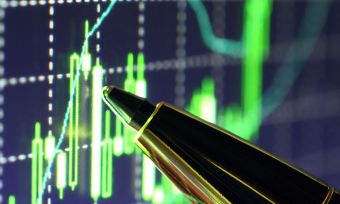The web is full of blogs and articles telling you how to get rich through the stock market. Investor strategies, new apps to invest your spare change, online investment platforms… It all seems easier than ever – and some say that’s leading to an increasingly short-term view of playing the markets.
But how much do you really need to be earning to be able to invest?
The truth is, for most of us our biggest and most important assets will be our superannuation and our home. And here’s why.
Recent analysis of Australian tax returns for 2011-12 found that less than 5 per cent of people lodging a return earned over $150,000. Just 11.1 per cent earned over $100,000.
Meanwhile, the median house price keeps on rising – in mid-2015 it ticked over the $1 million mark in Sydney, and it’s not that far behind in Melbourne. Even for that top 11.1 per cent, it’s not always easy to raise the first home buyer deposit.
What’s also interesting is that those earning $150,000 or more are the only group less prone to financial stress, according to our research in 2015 for the Financial Fitness of working Australians report. While almost half of all Australians are worried about their financial situation, 54 per cent of those earning over $150,000 said they were “doing well and feeling comfortable” and 42 per cent “doing OK and making ends meet.”
Anyone earning below $150,000? They could be suffering financial stress simply due to the decisions they make in three key areas:
- Control over your personal finances (do you pay regular bills and pay of your credit cards?)
- Planning for your future (do you have a plan, and enough knowledge to make financial decisions?)
- Ability to absorb a financial shock (are your possessions, home, life and ability to earn an income protected? Do you have savings for an emergency?)
Those three things will in turn influence our fourth factor for financial fitness – a feeling of financial freedom. The ability to do what you want, when you want to.
So before you set up that investment account, make sure you have those foundations in place first.
If your income isn’t enough to stay on top of your bills (and avoid paying interest on your credit card) sort that out first. If you don’t have some insurance in place and a regular savings plan, put that on your to do list.
If there is any money left over at the end of each month, you may want to think about topping up your superannuation, and letting the magic of compounding take its effect over the next few decades. You could even benefit from a co-contribution from the Government.
Or you may be better off paying down your mortgage first – top up your variable loan payments, and you could shave years off your loan.
A financial planner is more likely to suggest you invest in shares – because they’ll make a cut on the amount they ‘manage’. But nine times out of ten, you’re better off putting any spare money into your mortgage. Reducing your interest is a guaranteed return.
Sure, it may not be as exciting as checking your portfolio prices on your phone. But it’s the reality of life – you need somewhere to live, and you need an income when you finish working. Get that under control, and enjoy the exhilaration of financial freedom in the future – no matter how much you earn today.
About the author:
Paul Feeney is an Australian who is passionate about changing the way people access independent financial advice. After 10+ years as a private banker and financial planner he is now approaching financial advice with fresh set of eyes with the aim of making it available to everyone, at the same time, cutting the link between advice and product sales. Find out more at https://www.mapmyplan.com.au/





Share this article